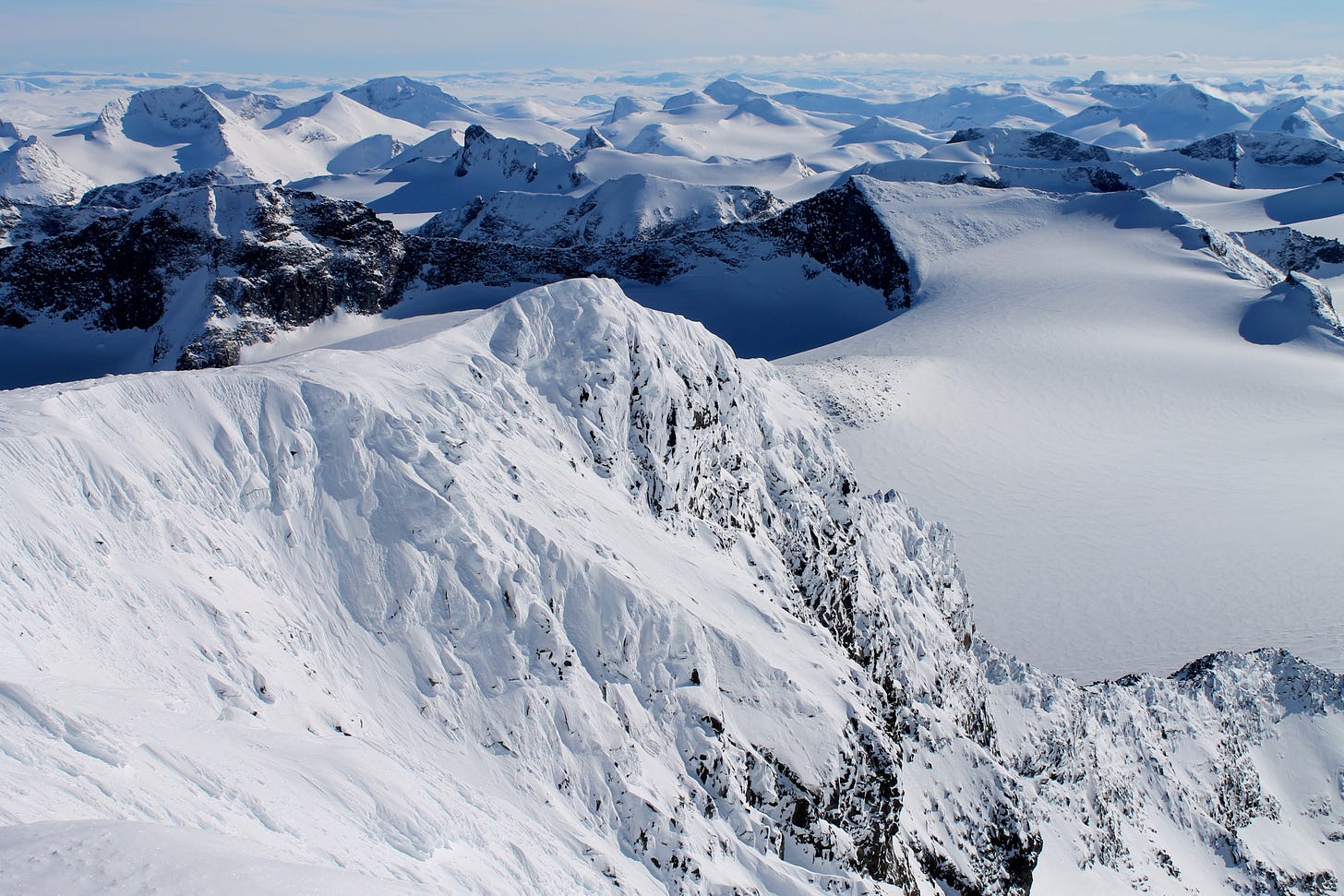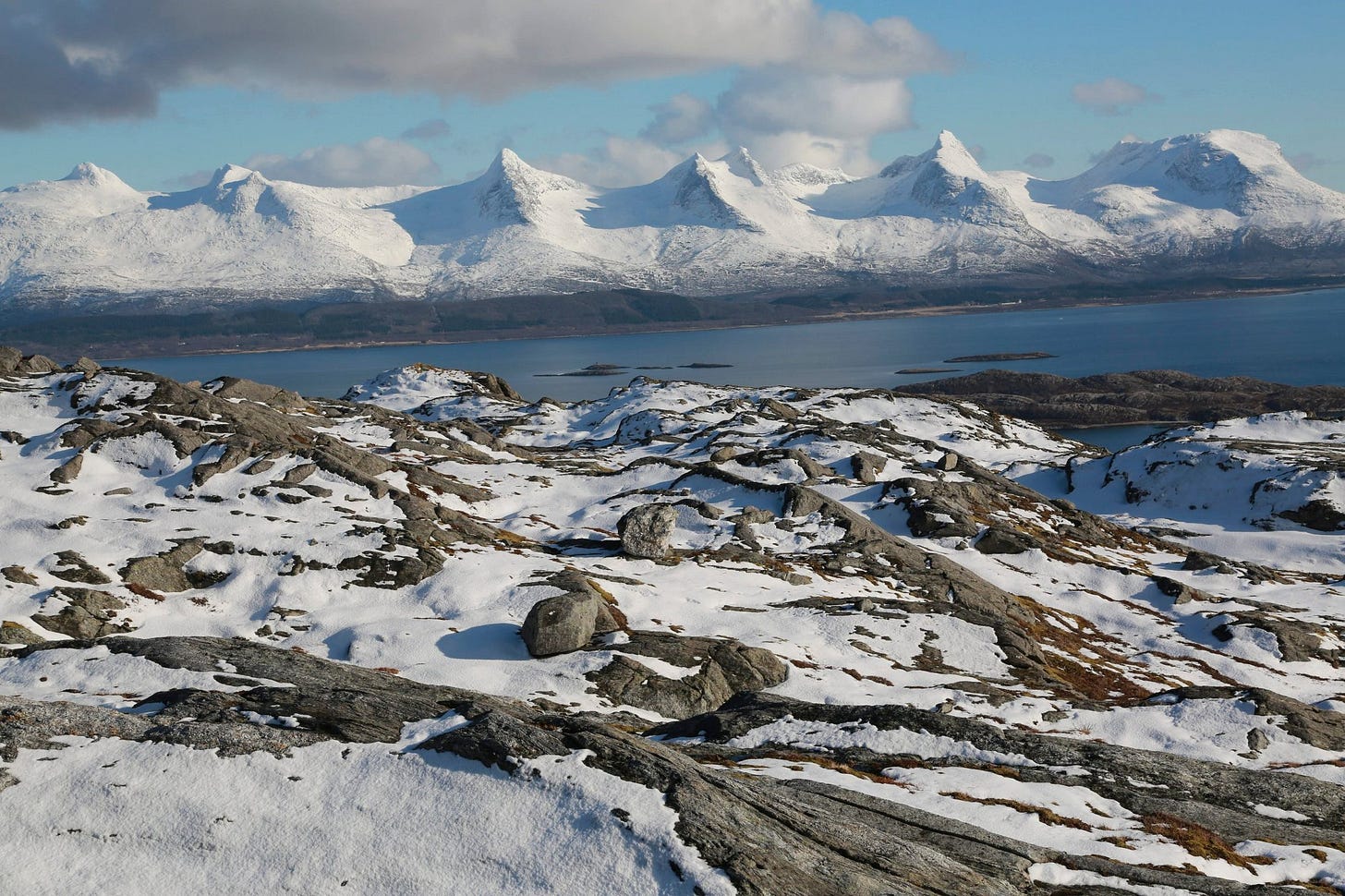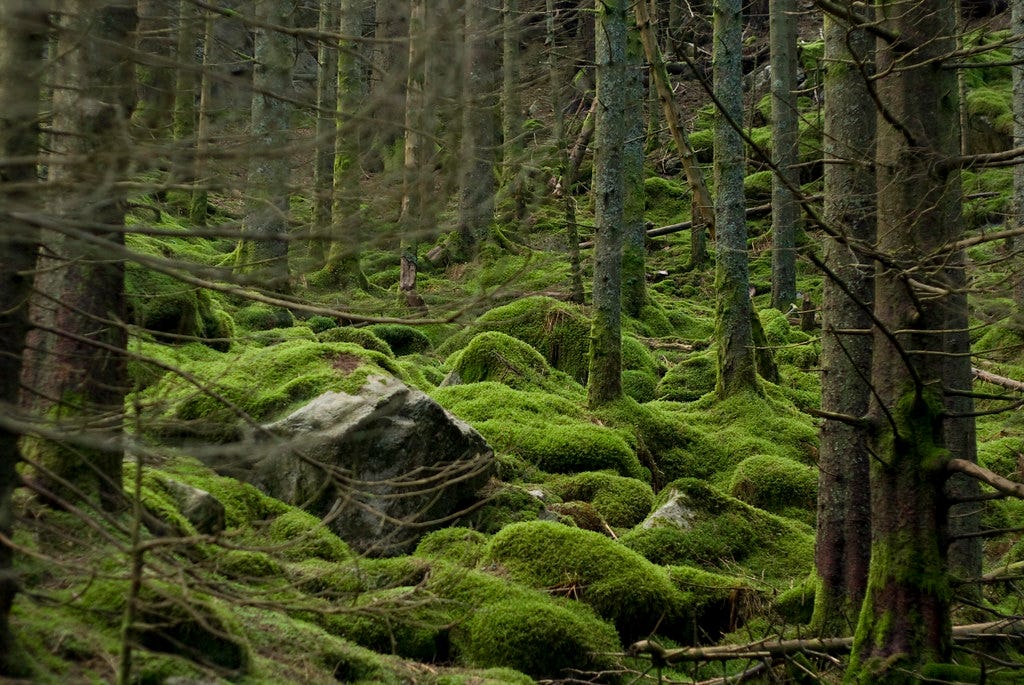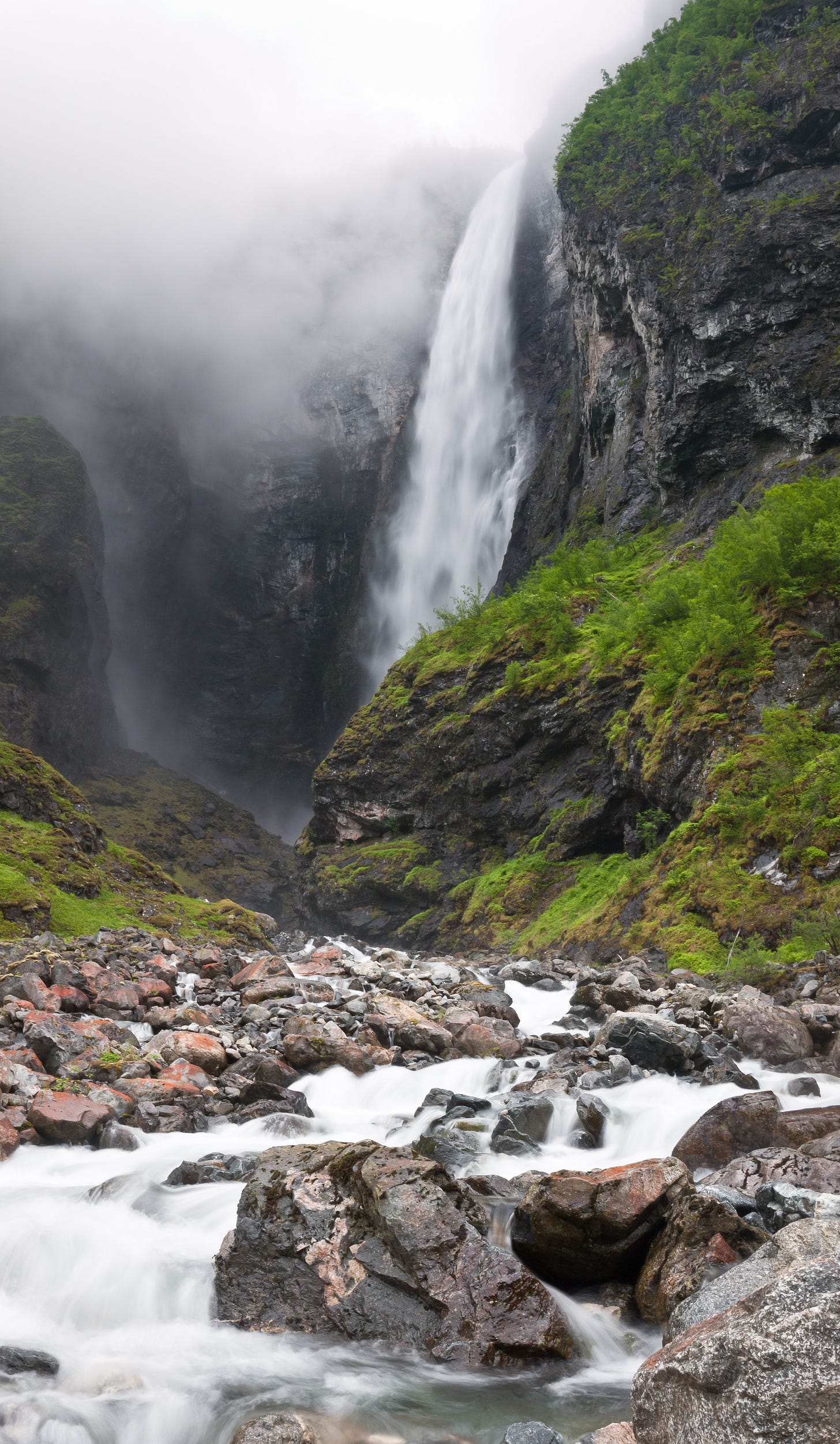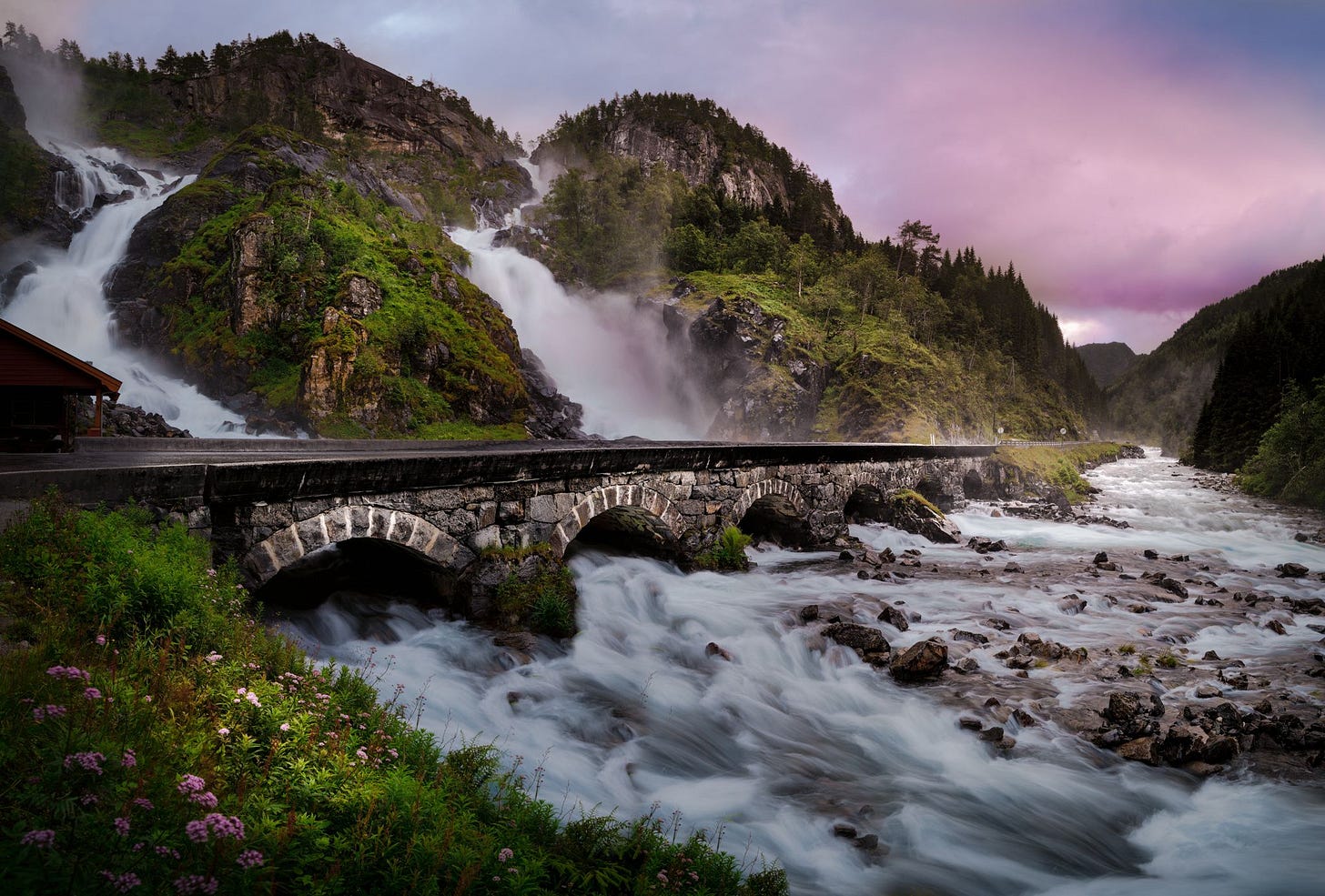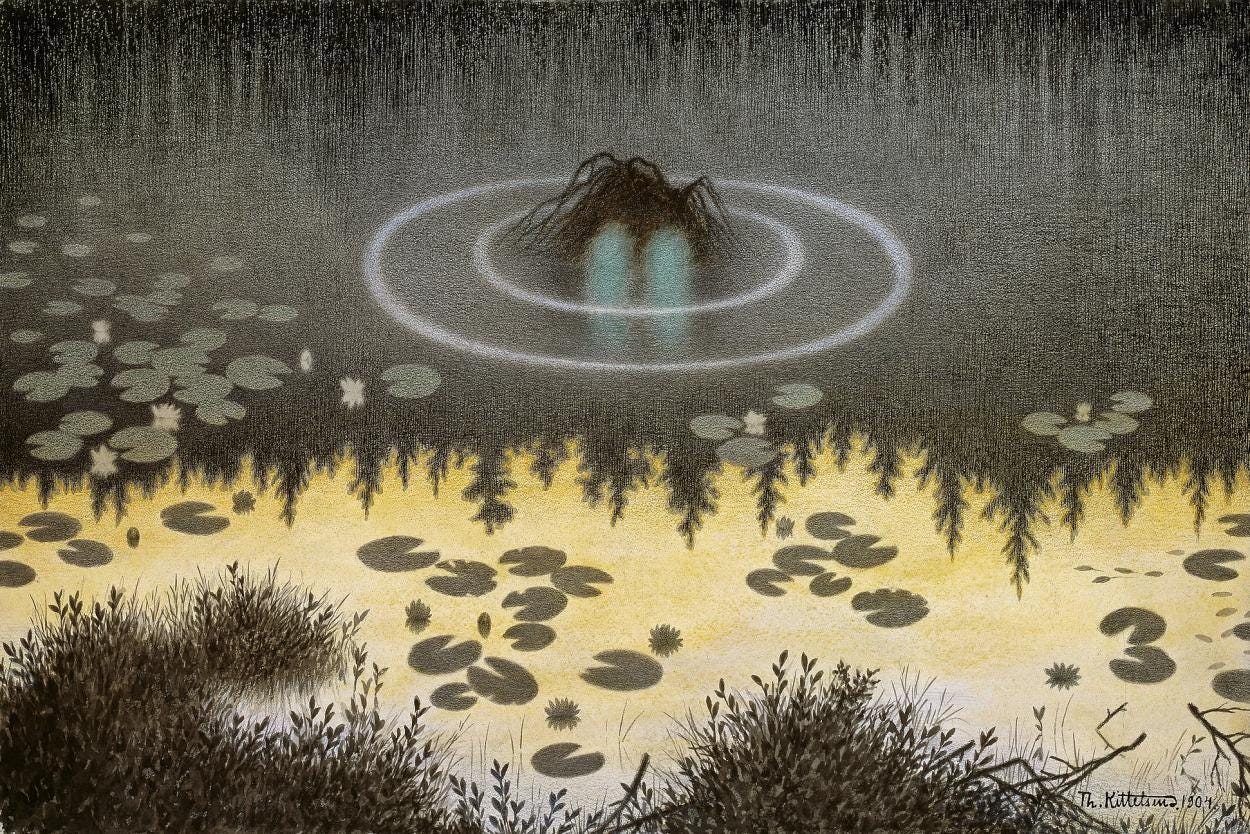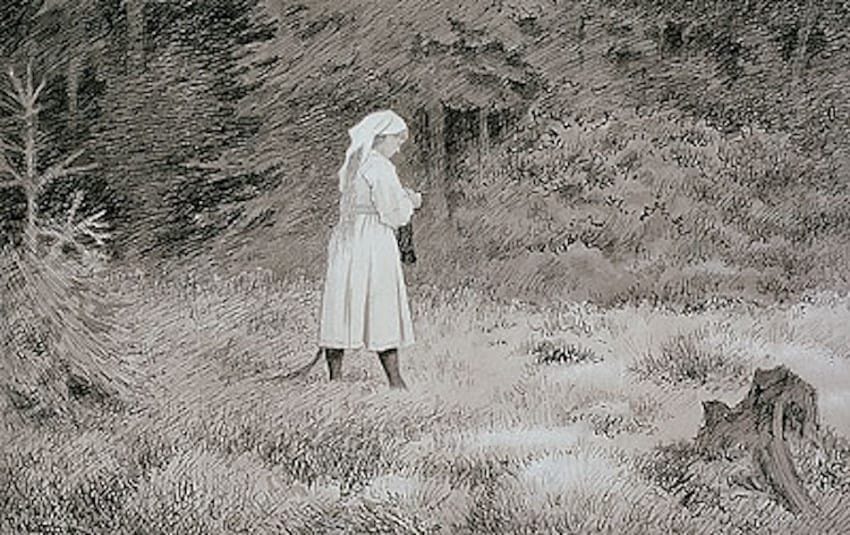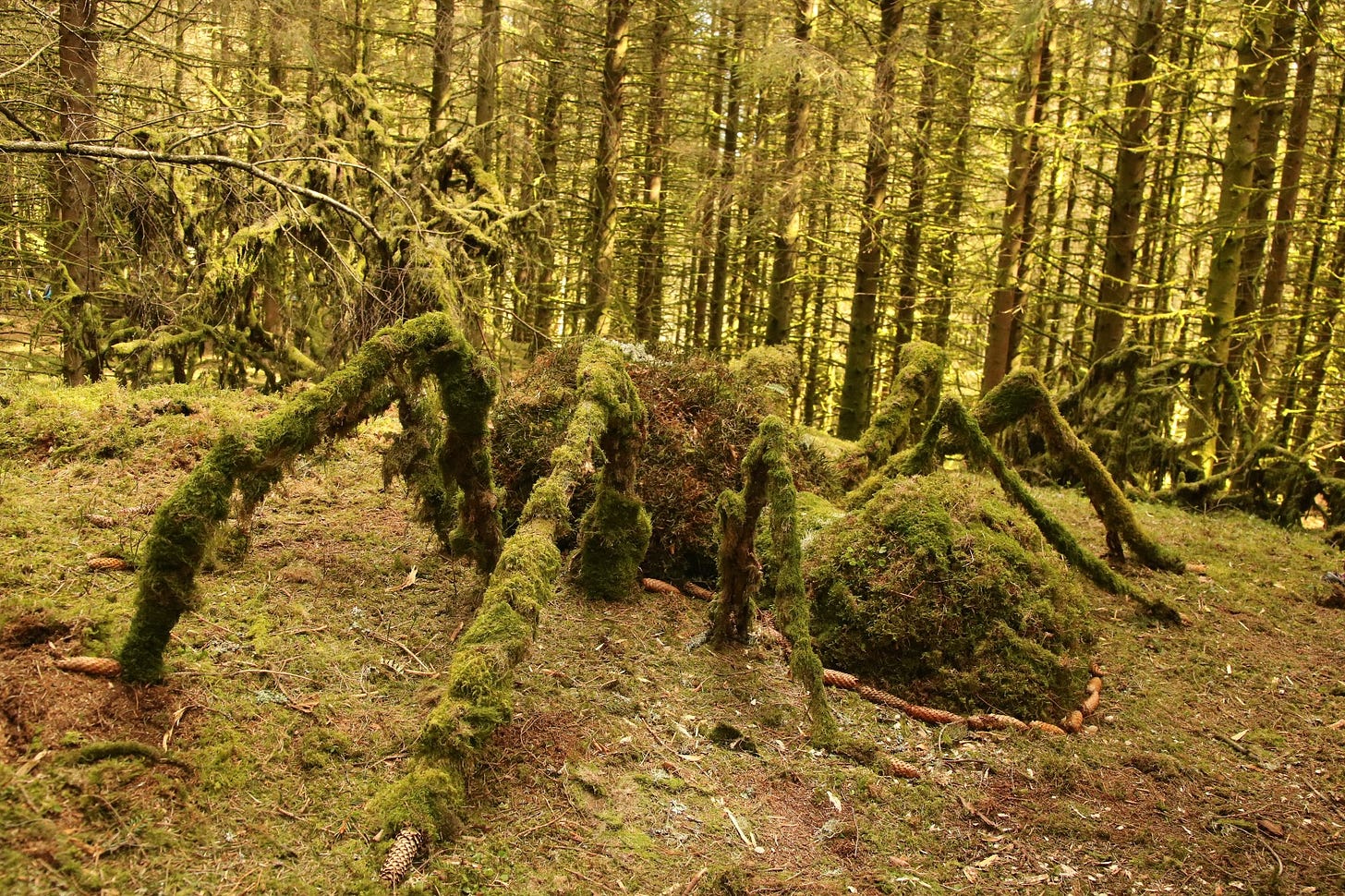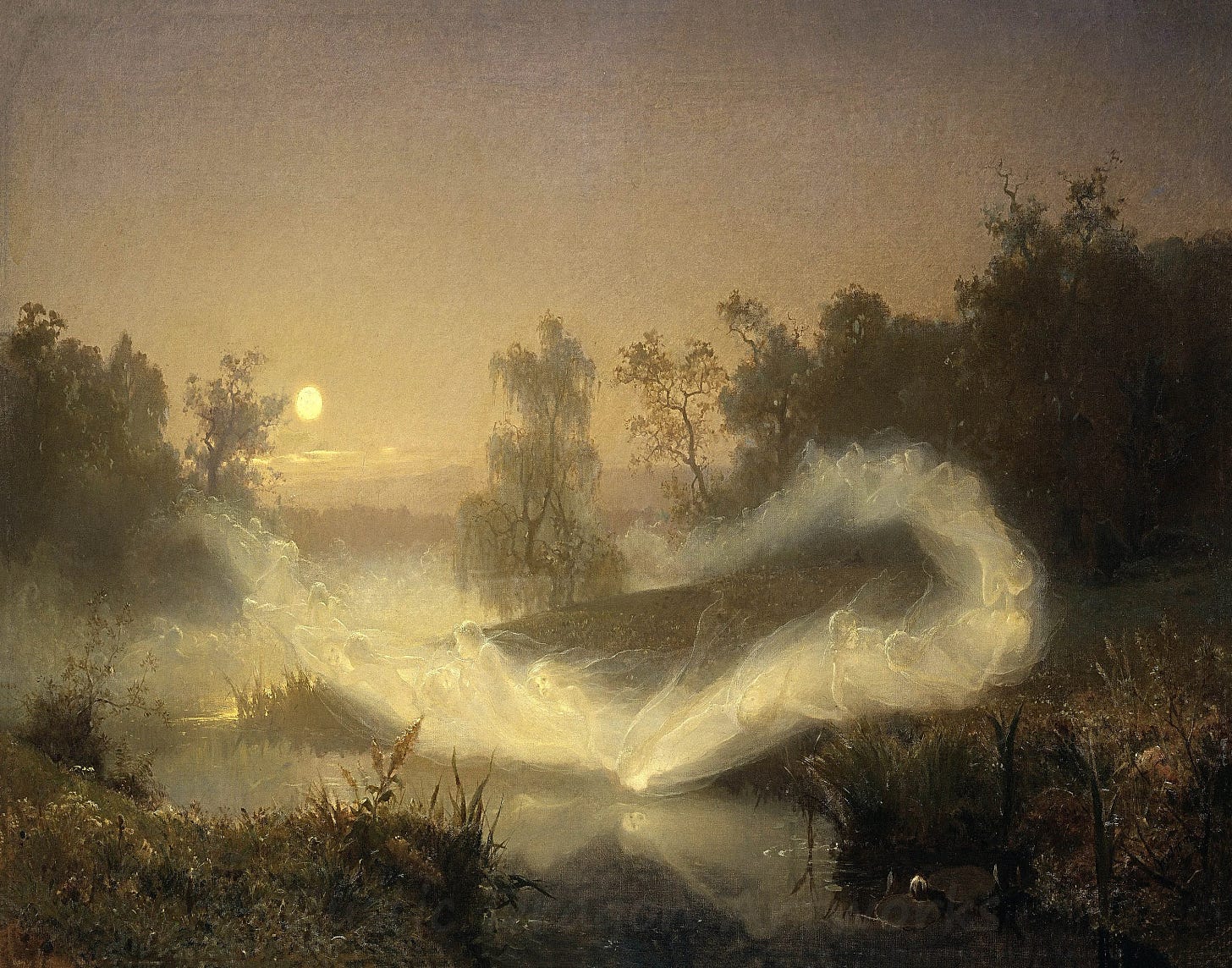There is much more than what just meets the eye in the breathtaking landscapes of Norway. Every mountain, every forest, has a long history of myths and legends, and is part of Norse and Norwegian culture and traditions.
Jǫtnar
(Jotun or Jotne, plural Jotner in modern Norwegian)
Jǫtnar are ice giants (plural of Jǫtunn). Often wrongly confused with troll, when in fact they truly are completely different beings. Their home is Jotunheimen, home of Norway’s highest peak, Galdhøpiggen, at 2,469 meters, located in Innlandet. Jǫtnar have carved these Norwegian mountains as their home, and gate to their world. Jǫtnar can be a threat to anyone who ventures into Norway’s wilderness (as well as the wildernesses of a few other places too). Many hunters would often hear them talk between each other, like a breeze or wind part of the landscape, about how they would eat them.
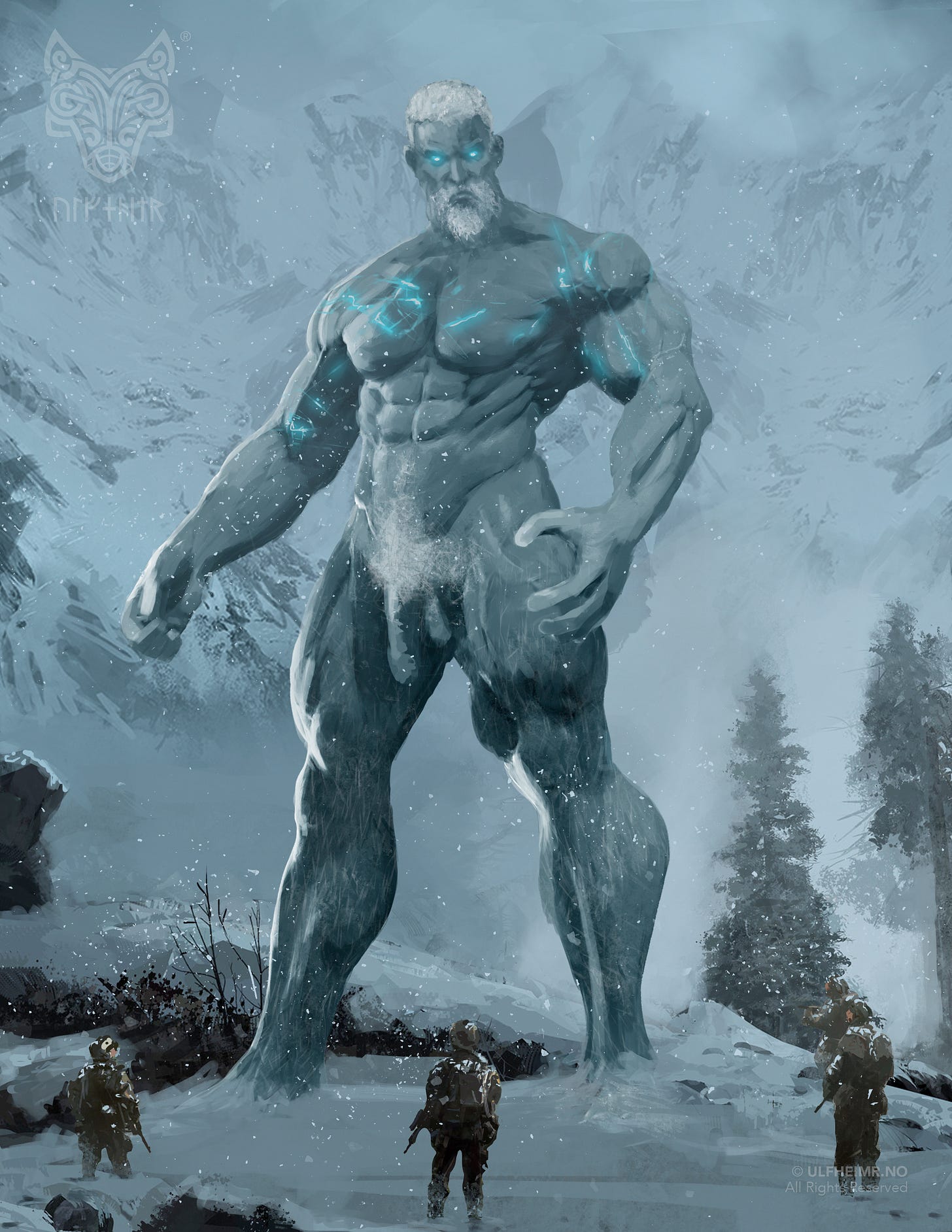
Troll
(Same word in modern Norwegian)
Troll are quintessential parts of Norwegian myth. Their image is often carved into stones on hiking trails and wood in the forest. Some were once giants of the mountain landscape of Norway, like De syv søstre (The Seven Sisters). The seven daughters stayed too late and were pursued until daylight, becoming petrified into these magestic peaks. With the same fate happening to their cousins in British Columbia, Canada.
Their home, though, besides many of them just happening to dwell under bridges, is Trollskogen, near Bergen (with also another colony in Sweden, on the island of Öland).
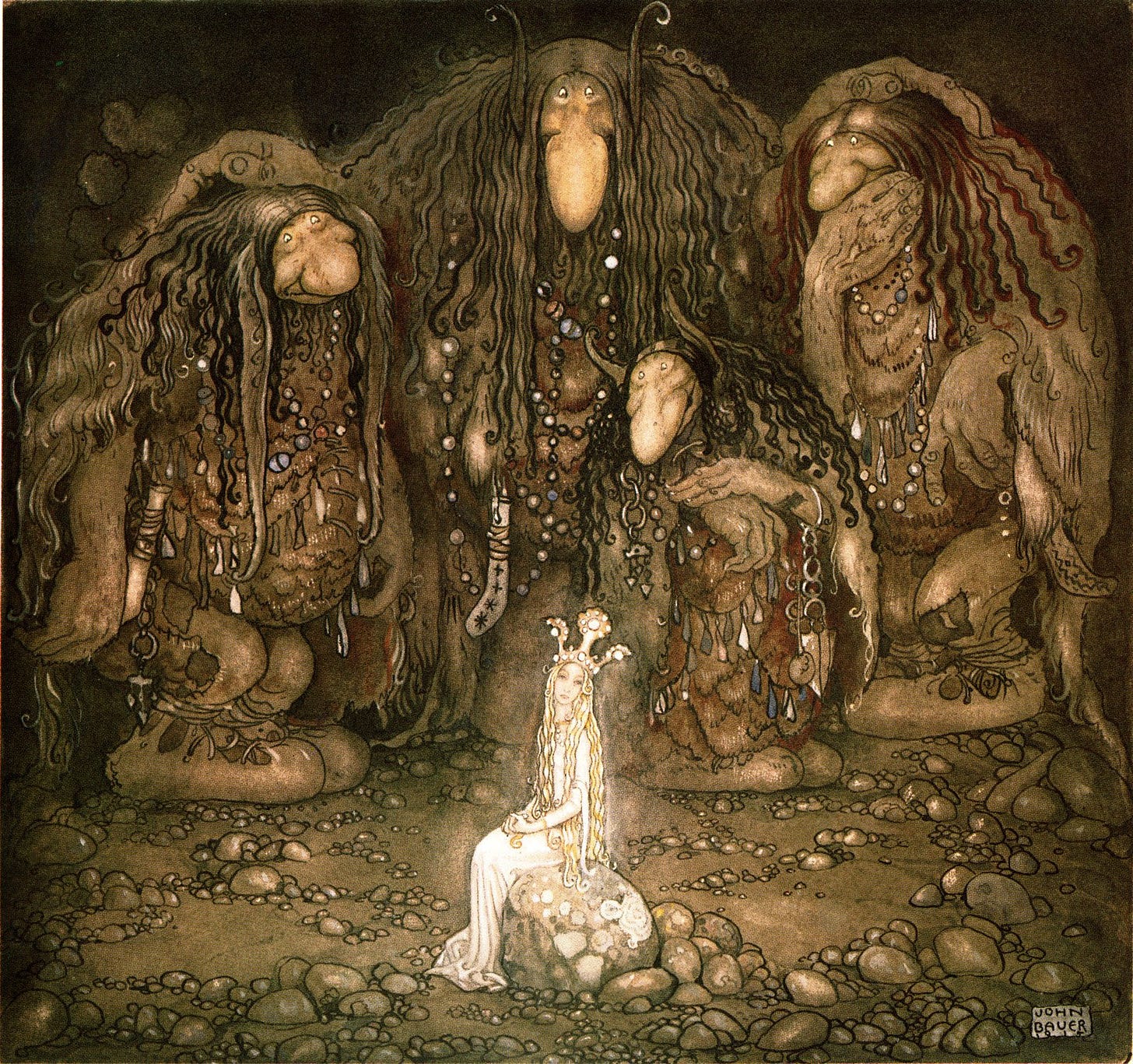
Vatnavættir
(Vannvette in Modern Norwegian)
Vatnavætti are (always male) water spirits in Norse culture. There are many of them. The best known such creatures are Nøkk (or nøkken, nykken and nykkjen) in modern Norwegian, which live in rivers, ponds, water and lakes inland. A Nøkk can often lure people to him, playing the fiddle, to drown them. Ultimately, a Nøkk is a warning of the danger of water to Norwegian children.
Fossegrim is another one of many vatnavættir (water spirits). If you want to learn how to be a good fiddle player, you just need to go to one of the many waterfalls in Norway with a leg of lamb. If it is a good enough leg of lamb, Fossegrim will come out and teach you how to play particular tunes. If the leg of lamb is not big enough, he may never come out, or only teach you how to tune your fiddle.
There are also landvette (land spirits), skogsvette (forest spirits), husvette (house spirits), and sjøvette (ocean spirits).
Álfar
(Alv in modern Norwegian)
There are many species of elves in Norse culture: Dökkálfar (Dark elves), Ljósálfar(Light elves) and Svartálfar (Black elves).
In Norway, elves are known as underground people under our feet, and there are a lot of stories of elves not being very happy when people on the surface engage in farming activities and cow waste fall on their dining table. A prominent such being in Norway is Hulder or Huldra, a seductive female Elf, associated with forests. She is also believed to be a vǫlva. Why she is typically beautiful and with human features, she is often described as also having a tail (like a fox’s or cow’s).



